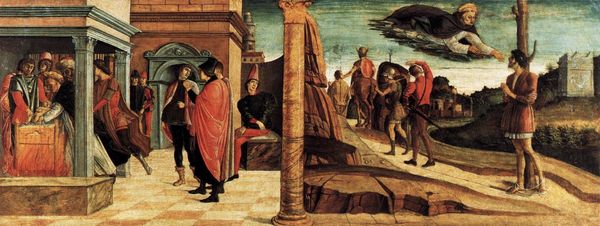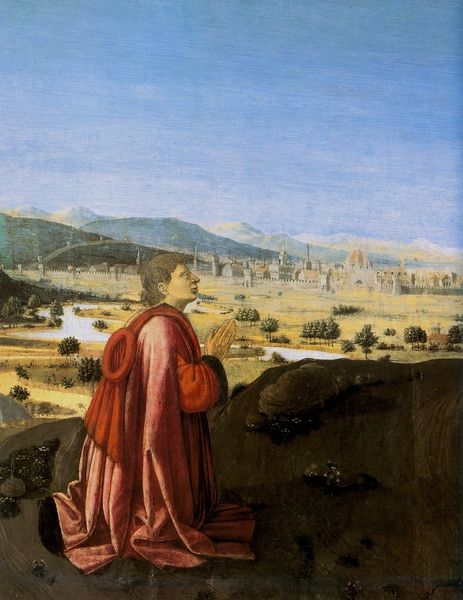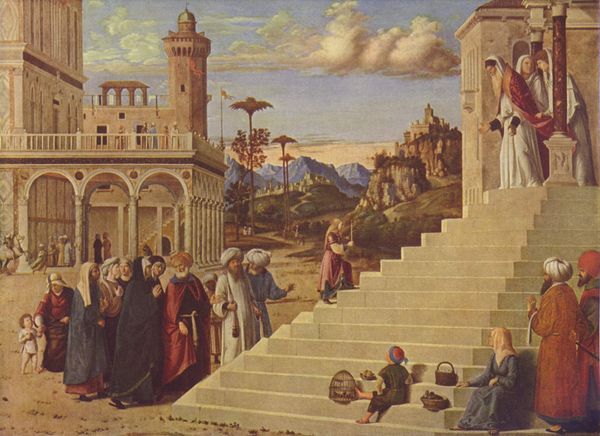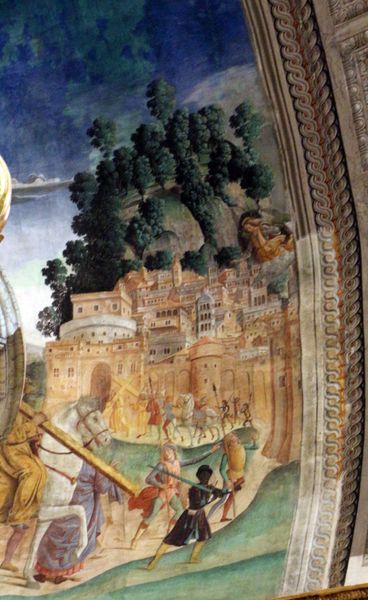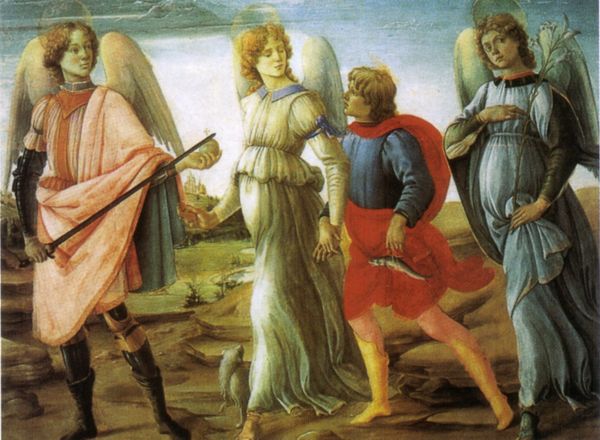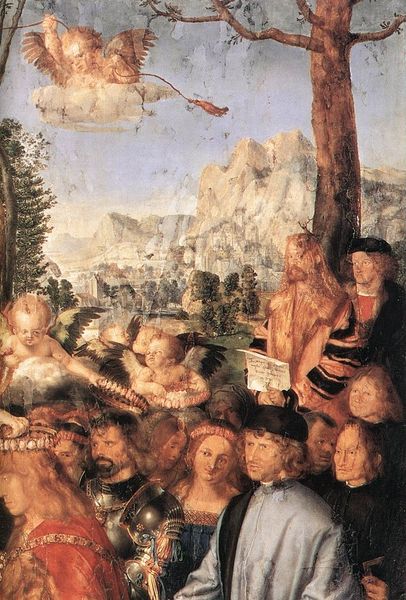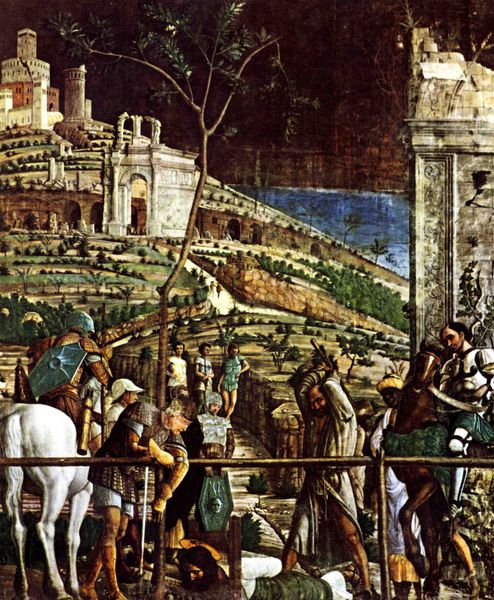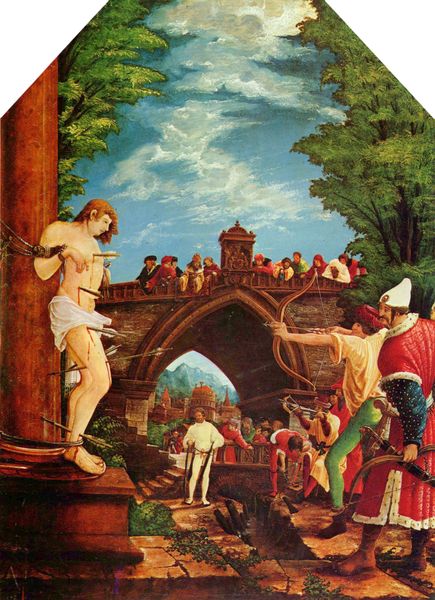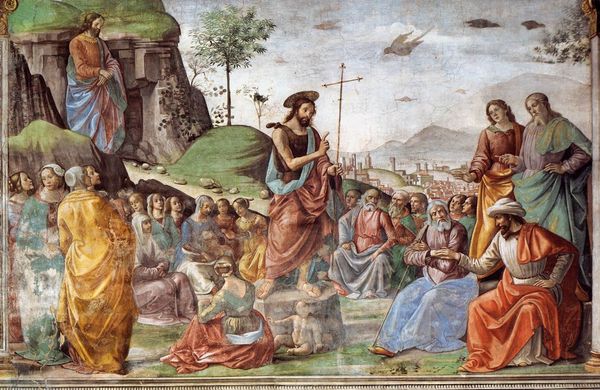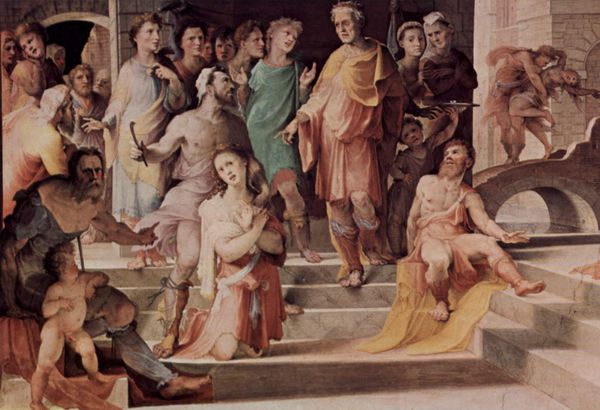
oil-paint
#
portrait
#
narrative-art
#
oil-paint
#
landscape
#
figuration
#
11_renaissance
#
oil painting
#
christianity
#
history-painting
#
northern-renaissance
#
christ
Copyright: Public domain
Editor: This is a fragment from Albrecht Dürer's "Adoration," painted around 1504, in oil. What strikes me is the portrayal of one of the Magi; he seems to be the focal point. What's your interpretation of his prominence and his role within this piece? Curator: This figure prompts vital questions regarding representation and power during the Renaissance. Dürer's depiction, while perhaps intending to honor the Biblical narrative, also inevitably reflects the Eurocentric worldview of the time. How might this portrayal reinforce or subvert existing social hierarchies, especially given the context of expanding European exploration and colonialism? Editor: So, it’s more than just a religious scene? Curator: Absolutely. It’s a potent site of cultural exchange and potential misinterpretation. What does it mean to portray a Black magus in the 16th century? Consider how the artistic choices might intersect with contemporary European perceptions of Africa and its people. Do you see any symbolic meaning behind the gifts or attire in relation to the figure’s identity? Editor: I guess I hadn't considered that. The gifts he carries are certainly luxurious, almost signaling wealth, but his skin color amidst European figures definitely creates contrast, raising questions about his status. Curator: Exactly. We can analyze how this single figure speaks volumes about intercultural relations and the construction of identity within early modern Europe. Considering it's a fragment, imagining its full context, we also confront lost perspectives and untold stories from this period. Editor: I now see this work through an entirely different lens! Thank you for unveiling these complicated dynamics. Curator: My pleasure. Approaching art with such critical questions reveals not just historical technique, but also historical power.
Comments
No comments
Be the first to comment and join the conversation on the ultimate creative platform.
